Überblick
Infrarotlinsen beziehen sich auf Linsen, die zum Nachdenken verwendet wurden, brechen, und Infrarotlicht übertragen. Es verwendet einzigartige physikalische Eigenschaften, um die Kontrolle des Infrarotlichts zu erkennen, Es ist also von großer Bedeutung auf dem Gebiet der Infrarotoptik. Aufgrund der Frage der Durchlässigkeit, Es sind nur wenige Materialien zur Verwendung im Infrarotwellenlängenbereich zur Verfügung stehen, wie Si, Ge, Znse, Zns, und Mgf2.
Allgemein, Die Knoop -Härte von sichtbarem Lichtglas liegt dazwischen 300-700. Je schwieriger das Material ist, Je länger es dauert, um das optische Objektiv zu mahlen und zu polieren. Unter den Glasmaterialien, die üblicherweise auf dem Gebiet der Infrarot -Wärmeleichbildgebung verwendet werden, Die Härte von GE ist 780 , Während die Härte von Si erreicht ist 1150. Im Vergleich zu sichtbarem Licht, Die Härte der optischen Linse der thermischen Bildgebung von Infrarot ist viel höher, Die Schwierigkeit des Schleifprozesses und der Arbeitszeiten sind also viel größer als die des sichtbaren Lichts. Obwohl sowohl GE als auch SI harte Materialien sind, aber auch sehr spröde. Dies macht sie anfällig für Bruch während der Produktions- und Verarbeitungsprozesse, was zu einer Abnahme der Ertrag führt. daher, An den Verarbeitungstechniken werden strenge Anforderungen gestellt; Zusätzlich, Die Kosten pro Gramm dieser Materialien sind relativ hoch, Das Verarbeitungsrisiko erheblich machen.
Eigentum
1.hart
2.spröde
3.Das Material hat hohe Kosten
Der Knoop -Härte -Test eignet sich besonders zum Testen von Materialien, die hart und spröde sind. Es kann auch verwendet werden, um die effektive Tiefe der Oberflächenhärtungsschichten zu bestimmen. Es ist anwendbar, um die Härte kleiner Teile zu testen, kleine Bereiche, dünne Materialien, Feinkabel, Härte in der Nähe von Klingenkanten, Schichten Plattierungen, und Zahnmaterialien.
Gemeinsames Material
GE Material
GE ist ein äußerst wichtiges Material für optische Infrarotlinsen, Aber wegen seiner Knappheit auf Erde und hohem Preis, Viele Unternehmen übernehmen nach und nach andere kostengünstige Infrarot-optische Materialien in großem Maßstab. Mit der Entwicklung der Infrarotindustrie, Die Nachfrage nach optischen Infrarotmaterialien wächst, Die Forschung und Entwicklung sowie Produktion von optischen Infrarotmaterialien sind für viele spezialisierte Unternehmen zu Schlüsselfaktoren geworden.
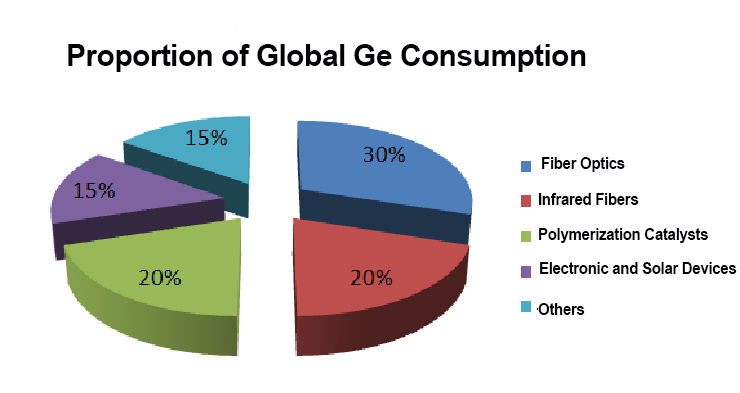
Das chemische Symbol von Germanium: Ge, ist ein grauweißes Metalloid, glänzend, hart, Zugehörigkeit zur Carbon -Familie, und hat offensichtliche nicht-metallische Eigenschaften. GE hat stabile chemische Eigenschaften und reagiert nicht mit Luft- oder Wasserdampf bei Raumtemperatur.
GE Glass hat eine gute leichte Übertragungsleistung bei 2-16um. Durch Ablagerung optischer Beschichtungen auf GE Glass, Seine Durchlässigkeit kann erheblich erhöht werden, während das Reflexionsvermögen auf der Oberfläche des Glass reduziert wird. Jedoch, GE Glas kann das Licht nicht im sichtbaren Wellenlängenbereich übertragen.
GE hat einen Inhalt von ungefähr 0.0007% in der Erdkruste, Es ist zu einem der verteiltesten Elemente in der Kruste. Es gibt nur wenige konzentrierte Germaniumerze. In verschiedenen Metall Silicic -Erzen gibt es eine erhebliche Menge GE, Sulfiderze, und verschiedene Arten von Kohle in dispergierter Form; bestimmter Kupfer, Eisen, Sulfiderze und Silbererze enthalten auch GE; Spurenmengen von GE finden sich in Felsen, Böden, und Quellwasser; In vielen Pflanzen sind begrenzte GE -Mengen vorhanden. GE wird in den Feldern der Elektronik häufig verwendet, Optik, Chemische Industrie, Biomedizin, Energie, und andere High-Tech-Branchen.
Als Infrarotmaterial, GE kann in LWIR- und MWIR -Bereichen verwendet werden. Im LWIR -Bereich, Es ist die positive Linse im achromatischen Doublet -Objektiv; Während im MWIR, Es ist die negative Linse im achromatischen Doublet -Objektiv. Dies ist auf den Unterschied in den Dispersionsmerkmalen in den beiden Wellenlängenbereiche zurückzuführen. Im MWIR -Bereich, GE ist sehr nahe an seinem niedrigen Absorptionsband, was zu schnellen Änderungen in seinem Brechungsindex und zu einer signifikanten Dispersion führt. Dies macht es als negatives Leistungselement in einem achromatischen Doublet -Objektiv geeignet.
GE ist ein kristallines Material, das in Form von Einkristallen oder Polykristallen hergestellt werden kann. Abhängig vom Wachstumsprozess, Einer Kristall GE ist teurer als polykristalline GE. Der Brechungsindex von polykristallinen GE ist nicht einheitlich genug, hauptsächlich aufgrund von Verunreinigungen bei Korngrenzen zurückzuführen, Dies kann die Bildqualität des FPA beeinflussen. daher, Einer Kristall GE wird bevorzugt. Bei hohen Temperaturen, GE -Material wird absorbierend, und sein Übertragungsverhältnis nähert sich bei 200 ° C Null.
GE hat eine hohe Knoop -Härte und wird häufig in Infrarotsystemen verwendet, die eine hohe Intensität erfordern. Aufgrund seines hohen Brechungsindex, Anti-Reflexionsbeschichtungen werden häufig auf GE angewendet, mit häufig verwendeten Wellenlängenbereichen von 3-12 μm oder 8-12 μm. Die Durchlässigkeit von GE nimmt mit zunehmender Temperatur ab, und streng genommen, Die optimale Betriebstemperatur liegt unten 100 Grad Celsius. Wenn es auf ein System angewendet wird, das empfindlich gegenüber Gewichtsanforderungen ist, Designer sollten die Merkmale von GE mit hoher Dichte berücksichtigen. Das Verhältnis der Linsengröße zur Dicke sollte an Verarbeitungsanteile haften, Während das Gewicht den Entwurfsanforderungen entsprechen sollte.
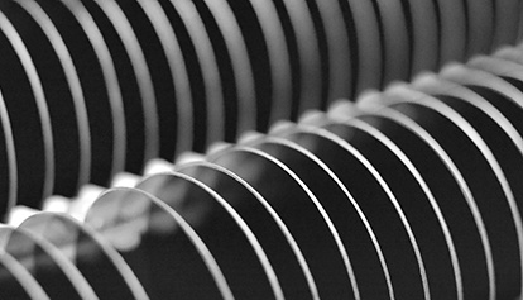
Der Temperaturkoeffizient des Brechungsindex (dn/dt) wird verwendet, um die Änderung des Brechungsindex mit Temperatur zu messen. Für die meisten Infrarotmaterialien, Der DN/DT ist mehrere Größenordnungen höher als die von sichtbarem Lichtglas, was zu einer signifikanten Änderung des Brechungsindex führt. Die Dichte einer Substanz ist fast immer umgekehrt proportional zur Temperatur, was bedeutet, dass die Dichte mit zunehmender Temperatur abnimmt. daher, Der Brechungsindex nimmt mit zunehmender Temperatur ab.
Der DN/DT von GE beträgt 0,000369c, Während der DN/DT von gewöhnlichem Glas 0,000360c beträgt. Dies kann eine signifikante Verschiebung mit Temperaturschwankungen verursachen, Oft benötigen.
Material
Si ist ein kristallines Material, das Ge ähnlich ist. Einkristall-Si ist ein chemisch inerter Material mit hoher Härte und Unlöslichkeit im Wasser.
Es hat eine gute Lichtübertragungsleistung sowohl im 1,2-7 & mgr; m Wellenlängenbereich als auch im weitinfrarischen Wellenlängenbereich von 30-300 μm, Das ist ein einzigartiges Merkmal, das in anderen Infrarotmaterialien nicht zu finden ist.
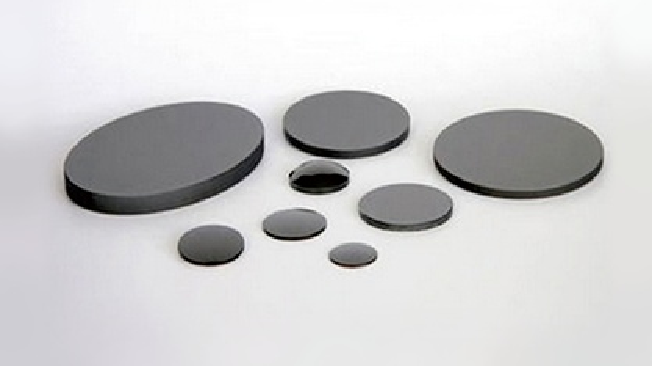
SI-Einzelkristall wird üblich. Aufgrund seiner guten thermischen Leitfähigkeit und geringen Dichte, Es wird häufig bei der Herstellung von Laserspiegeln und Anlässen verwendet, die auf Volumen und Gewicht empfindlich sind.
Der Brechungsindex von Si ist etwas niedriger als der von GE, Aber es ist immer noch hoch genug, um Aberrationen zu kontrollieren. Zusätzlich, Si hat eine relativ geringe Dispersion. Si kann Diamond gedreht werden.
Einer der Nachteile von Silizium und einigen anderen kristallinen Materialien ist, dass sie spröde und zerbrechlich sind.
Zns
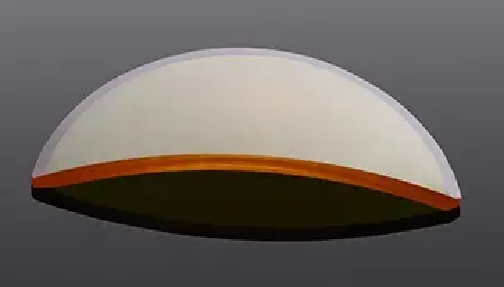
ZnS ist ein chemisch inerter Material mit den Eigenschaften einer hohen Reinheit, unlöslich im Wasser, Mäßige Dichte, und einfache Verarbeitung. Es ist ein Material, das üblicherweise in MWIR- und LWIR -Bändern verwendet wird.
ZnS ist ein Material mit guter Einheitlichkeit und Konsistenz des Brechungsindex, und hat eine gute Bildübertragungsleistung in der 8-12 μm Bande, aber es beginnt teilweise danach zu absorbieren 10 μm. Das Material hat auch eine hohe Durchlässigkeit im Mittelinfrarot, aber Absorption und Streuung nehmen zu, wenn die Wellenlängen kürzer werden. Im Vergleich zu ZnSE, ZnS hat eine hohe Härte, doppelt so, und starker Widerstand gegen harte Umgebungen.
Zns ist im Allgemeinen rostgelb und durch sichtbares Licht durchscheinend. Zns, die durch heißes Pressen hergestellt werden, kann durch sichtbares Licht transparent sein. Transparente Zns können verwendet werden, um multispektrale Fenster und Objektive von sichtbar bis LWIR -Bändern herzustellen.
ZnS ist ein transparentes Infrarot -transparentes Material. Es hat eine stabile Durchlässigkeit im Infrarotband und hat hervorragende optische Eigenschaften, und ist eines der Hauptmaterialien für die Herstellung von Infrarotfenstern. Im Infrarotherstellungsprozess, Zns können durch Dünnfilmabscheidungstechniken verwendet werden, um den Infrarot -Reflexionseffekt zu erhöhen. ZnS -Materialien werden häufig zur Herstellung von Infrarotsensoren verwendet, optische Objektive, Wärmeleitbilder, Verkleidungen und optische Infrarotkomponenten.
Znse
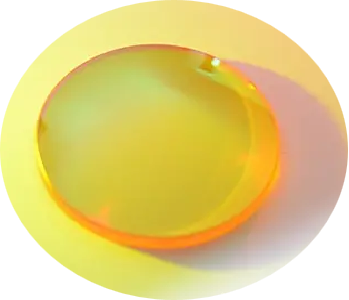
Znse ähnelt in vielerlei Hinsicht Zns. Sein Brechungsindex ist etwas höher als der von Zns, und seine Struktur ist nicht so stark wie Zns. daher, Eine dünne Schicht Zns wird manchmal aus Gründen der Umweltdauer auf ein dickes Znse -Substrat abgelagert. Verglichen mit Zns, Der wichtigste Vorteil von ZnSE ist der extrem kleine Absorptionskoeffizient.
Znse ist ein häufig verwendetes Infrarot -reflektierender Filmmaterial, und sein Reflexionswellenlängenbereich ist 2-14 μm. Es hat die Vorteile einer hohen Durchlässigkeit, Einfacher Vorbereitungsprozess, Gute Korrosionsbeständigkeit und Verschleißfestigkeit. ZnSE -Film kann auch mit anderen Arten von Infrarot -Objektivmaterialien verwendet werden, um die Wirkung der Infrarotreflexion zu erhöhen. ZnSE -Objektive werden in Infrarotsensoren verwendet, Wärmeleitbilder, und verschiedene Infrarot -Steuerungssysteme.
Weil ZNSE einen niedrigen Absorptionskoeffizienten und einen hohen thermischen Expansionskoeffizienten aufweist, Es wird normalerweise als Grundmaterial von Reflektoren und Strahlspalten verwendet. Jedoch, Da ist Znse relativ weich (Knoop Härte von 120) und leicht zu kratzen, Es wird nicht empfohlen, in rauen Umgebungen verwendet zu werden. Achten Sie beim Halten und Reinigen auf einheitliche Kraft, Und es ist am besten, Fingerbeben oder Handschuhe zu tragen.
Fluorid
Mgf2
MGF2 ist auch ein kristallines Material. Sein kristallines Material überträgt das Spektralband von UV auf MWIR. MGF2 kann durch Kristallwachstum oder erzeugt werden “heißes Pressen”, was zu einem milchigen glasigen Material führt. Es überträgt sich in der MWIR -Band gut, Aber es kann unerwünschte Streuung geben, Verursacher des Kontrast- und Off-Axis-streunenden Lichts verursachen.
CUF2
CUF2 ist ein häufiges Infrarot -absorbierendes Material. Es kann das Infrarotband von 2-14 μm absorbieren, und kann die Durchlässigkeit im sichtbaren Spektrumbereich gleichzeitig verringern. daher, Infrarotfilter aus CUF2 können in Anti-Blend- und Wärmebildsystemen verwendet werden. CUF2 -Materialien können auch in optischen Objektiven, Infrarotfenstern und anderen Feldern verwendet werden.
CAF2
CAF2 hat eine hohe Durchlässigkeit zwischen Ultraviolett und Mittelinfrarot (250nm ~ 7 μm), Es wird also häufig bei der Herstellung von Prismen eingesetzt, Fenster und Objektive, usw. In einigen Anwendungen mit einem breiten Spektralbereich, Es kann direkt ohne Beschichtung verwendet werden. Insbesondere, Es hat eine niedrige Absorption und eine hohe Laserschwelle, das ist sehr geeignet für Excimer Laser Optical System.
BAF2
Der Lichtdurchlässigkeitsbereich von BAF2 -Kristall ist breit, und die Lichtübertragung ist gut im Wellenlängenbereich von 0,13 μm ~ 14 μm. Die Eigenschaften von Einkristall und Polykristallin sind im Grunde genommen gleich, und das Material ist schwierig, einen Kristall zu produzieren, Der Preis für Einkristall ist also doppelt so hoch wie bei Polykristallin. BAF2 -Kristall ist ein ideales Material, um optische Komponenten wie verschiedene optische Fenster herzustellen, Prismen und Linsen. Es kann in Fenstern für Infrarot -Stromverteilungsschrank verwendet werden, Fourier -Gasanalysefenster, Öl- und Gaserkennung, Hochleistungslaser, optische Instrumente, usw.
Saphir
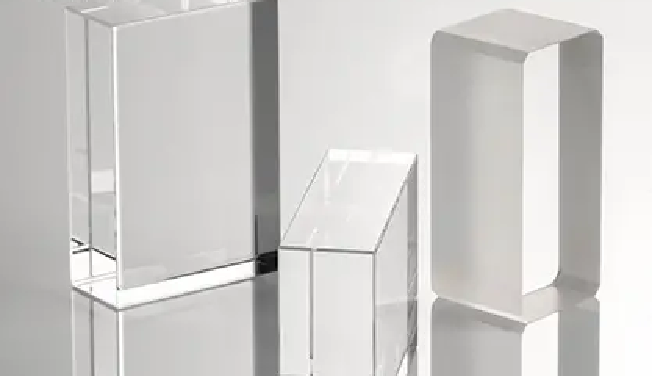
Die Zusammensetzung des Saphirs ist Aluminiumoxid, das ist blau aufgrund der Trace -Elemente Titanium (Ti4 +) oder Eisen (Fe2+). Tatsächlich, Das Korund der Edelsteinqualität in der Natur wird Sapphire mit Ausnahme des roten genannten Rubys bezeichnet, und andere Farben wie Blau, Hellblau, Grün, Gelb, grau, farblos, usw.
Saphir ist ein extrem hartes Material. Es überträgt das Licht von der tiefen UV auf MWIR. Eine einzigartige Eigenschaft von Sapphire ist sein sehr niedriger thermischer Emissionsvolumen bei hohen Temperaturen. Dies bedeutet, dass das Material bei hohen Temperaturen weniger thermische Strahlung ausgibt als andere Materialien. Saphir kann verwendet werden, um Hohlraumfenster zu erstellen, die hohen Temperaturen standhalten und zum Übergeben von Fenstern im Infrarotband geeignet sind.
Der Hauptnachteil von Saphir besteht darin, dass seine Härte die optische Verarbeitung schwierig macht. Ein weiteres ähnliches Material heißt Spinel. Spinel ist ähnlich wie der heißgepresste Saphir und kann anstelle von Saphir verwendet werden. Spinellstein hat auch eine hohe Dispersion.
Die Anwendungsfelder von Saphir umfassen hauptsächlich LED -Substratmaterialien, Unterhaltungselektronik und militärische Anwendungen. Es ist ein wichtiges Material, um die Entwicklung der Energieeinsparung zu unterstützen, Umweltschutz, Informationstechnologie der neuen Generation, Neue Energiefahrzeuge und andere Branchen.
 Fronir: Optoelektronische Produkte
Fronir: Optoelektronische Produkte
